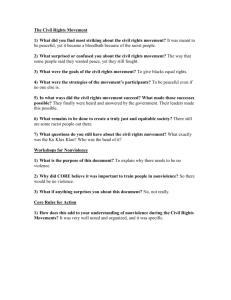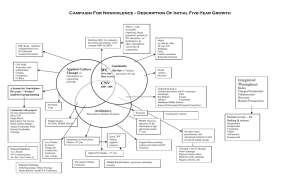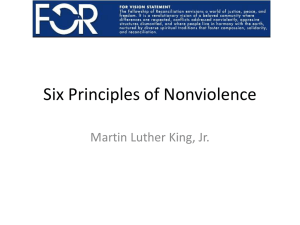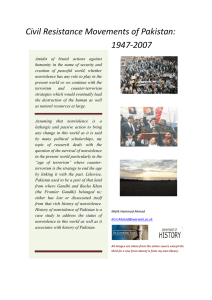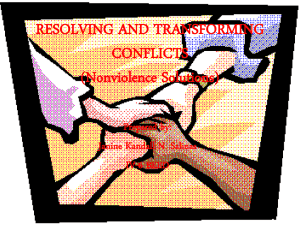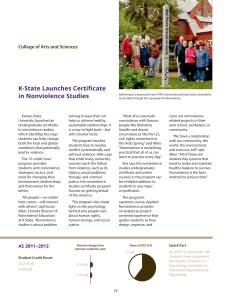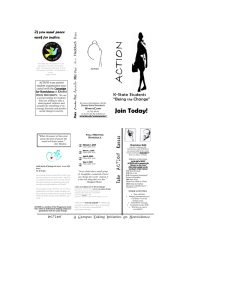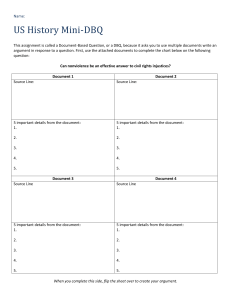The Kansan, Newton, Kansas, March 2008
advertisement
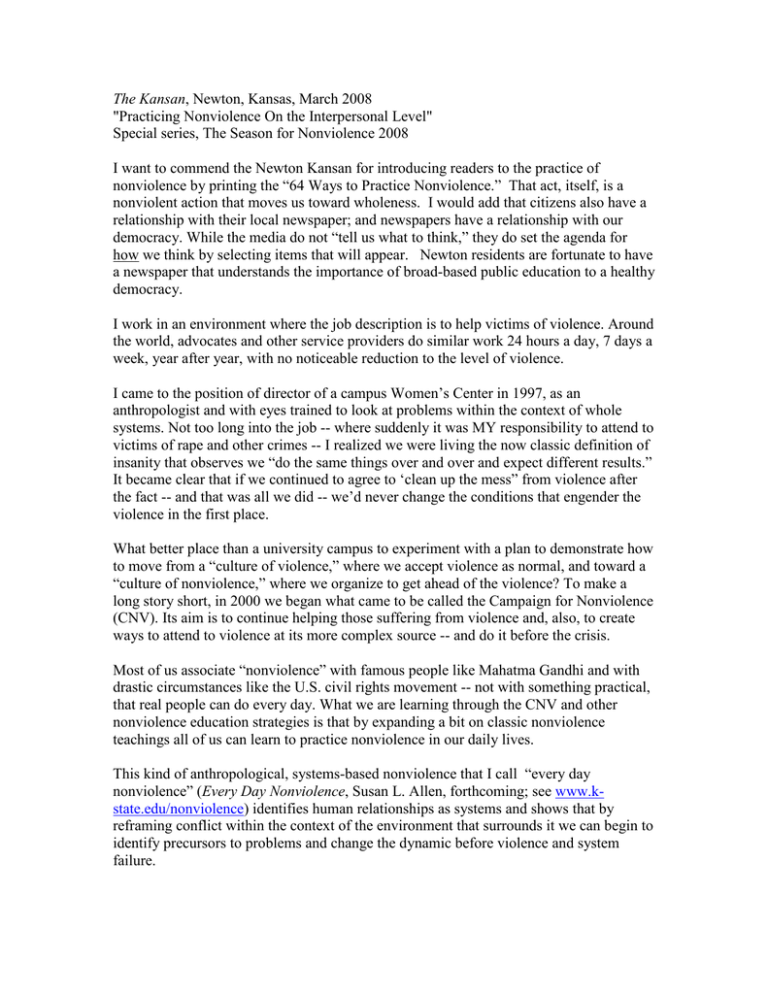
The Kansan, Newton, Kansas, March 2008 "Practicing Nonviolence On the Interpersonal Level" Special series, The Season for Nonviolence 2008 I want to commend the Newton Kansan for introducing readers to the practice of nonviolence by printing the “64 Ways to Practice Nonviolence.” That act, itself, is a nonviolent action that moves us toward wholeness. I would add that citizens also have a relationship with their local newspaper; and newspapers have a relationship with our democracy. While the media do not “tell us what to think,” they do set the agenda for how we think by selecting items that will appear. Newton residents are fortunate to have a newspaper that understands the importance of broad-based public education to a healthy democracy. I work in an environment where the job description is to help victims of violence. Around the world, advocates and other service providers do similar work 24 hours a day, 7 days a week, year after year, with no noticeable reduction to the level of violence. I came to the position of director of a campus Women’s Center in 1997, as an anthropologist and with eyes trained to look at problems within the context of whole systems. Not too long into the job -- where suddenly it was MY responsibility to attend to victims of rape and other crimes -- I realized we were living the now classic definition of insanity that observes we “do the same things over and over and expect different results.” It became clear that if we continued to agree to ‘clean up the mess” from violence after the fact -- and that was all we did -- we’d never change the conditions that engender the violence in the first place. What better place than a university campus to experiment with a plan to demonstrate how to move from a “culture of violence,” where we accept violence as normal, and toward a “culture of nonviolence,” where we organize to get ahead of the violence? To make a long story short, in 2000 we began what came to be called the Campaign for Nonviolence (CNV). Its aim is to continue helping those suffering from violence and, also, to create ways to attend to violence at its more complex source -- and do it before the crisis. Most of us associate “nonviolence” with famous people like Mahatma Gandhi and with drastic circumstances like the U.S. civil rights movement -- not with something practical, that real people can do every day. What we are learning through the CNV and other nonviolence education strategies is that by expanding a bit on classic nonviolence teachings all of us can learn to practice nonviolence in our daily lives. This kind of anthropological, systems-based nonviolence that I call “every day nonviolence” (Every Day Nonviolence, Susan L. Allen, forthcoming; see www.kstate.edu/nonviolence) identifies human relationships as systems and shows that by reframing conflict within the context of the environment that surrounds it we can begin to identify precursors to problems and change the dynamic before violence and system failure. The global nonviolence axiom “if you want peace, work for justice” actually is an equation: if we want sustainable systems, including ongoing relationships at all levels, what we must work for is healthy organic balance. This means, “if we want safe homes and schools and communities, we need to work for fair relationships.” We need to care about and then work to build a healthy, well-balanced mind and body to maintain the whole system that is our Self. We need to care about and then work to build relationships where one partner does not abuse his or her power over the other to maintain the whole system that is a friendship or a marriage. We need to create a just community that promotes equal opportunity if we want a safe community. The same pattern holds as we move through the interconnected circles of systems that compose our relationships, including those between human beings and our environment. Like the nonviolence movement, in general, a local CNV (beginning perhaps by commemorating the Season for Nonviolence as you do in Newton) can help citizens change the organizational principle of their relationships FROM one where we ignore the little and big injustices, abuses of power and other precursors to violence and system breakdown; and move it TO one where we organize around the principle of “getting ahead of the violence” and attend to imbalances and precursors so we can prevent it. One of my favorite ideas from the nonviolence movement is this: Q: Why are we violent but not illiterate? A: Because we were taught to read. Susan L. Allen, Ph.D. Director of Nonviolence Education Kansas State University
